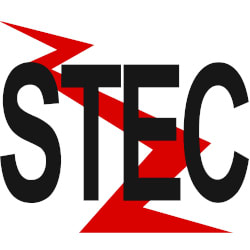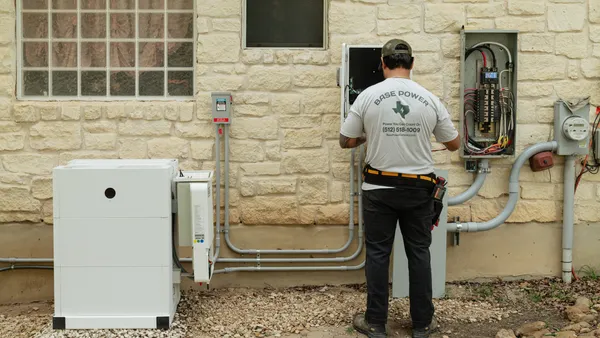Dive Brief:
-
The U.S. installed a record 3 GW of grid-scale storage in 2021, nearly three times the previous record set in 2020, according to the U.S. Energy Storage Monitor report by Wood Mackenzie and the American Clean Power Association (ACP).
-
Last year marked the first time the U.S. deployed more than 2 GW of grid-scale battery storage in a single year, according to Jason Burwen, vice president of energy storage at ACP. In spite of the milestone, total installations could have been larger, he said; an estimated 2 GW of capacity were delayed into 2022 and 2023 due to supply chain constraints.
-
Although supply shortages are expected to continue through 2024, annual installations of battery storage may double again by the end of 2022, Burwen said.
Dive Insight:
Battery storage may be entering a period of exponential growth, not unlike what the solar industry enjoyed over the past decade, according to data released Thursday by ACP and consulting firm Wood Mackenzie.
The U.S. deployed a total 3.5 GW of new storage capacity in 2021, according to Wood Mackenzie, setting a new record and marking the first time storage installations have exceeded 2 GW in a single year. Grid-scale projects accounted for the vast majority of the installations, but private and residential projects contributed 436 MW on account of growing demand in areas that have experienced energy instability, including California, Puerto Rico, and Texas.
"If you had told me in 2019 to just wait two years and we'll be in the multi-gigawatt range, I would have been a little surprised," Burwen said. "It is really just a sea change in the prospects of this industry... finally the rest of the world is getting it."
Total installations are expected to double again by the end of 2022; residential storage is on track to see annual installations hit 2 GW by 2026, according to Wood Mackenzie. But the storage industry hasn't escaped global supply chain pressures unscathed — Wood Mackenzie estimates that at least 2 GW of storage projects slated for completion in 2021 were delayed by a year or more. Increased costs for materials and transportation have wiped out technology-driven decreases in battery prices, according to the consulting firm, and growing interconnection delays are expected to slow projects further.
"We know there are many, many folks in the industry wanting to interconnect to the power grid, and those interconnection processes are getting longer and longer," Burwen said.
While growth is expected to continue, if the nation hopes to achieve the decarbonization goals established by the Biden administration, supportive policy will be necessary to accelerate deployment, Burwen said. Local action, reduced tariffs and increased support for domestic supply chains would be helpful, he said, but the creation of investment tax credits for standalone energy storage could be the single most effective thing that would help to nullify rising costs and keep the industry moving forward.
"This is not dissimilar from the rapid increase that we saw in solar ten years ago," Burwen said. But unlike the past, the continued growth of solar is increasingly intertwined with storage. "Storage is going to be a crucial part of ensuring that wind and solar developers can continue to deliver projects," he said.














